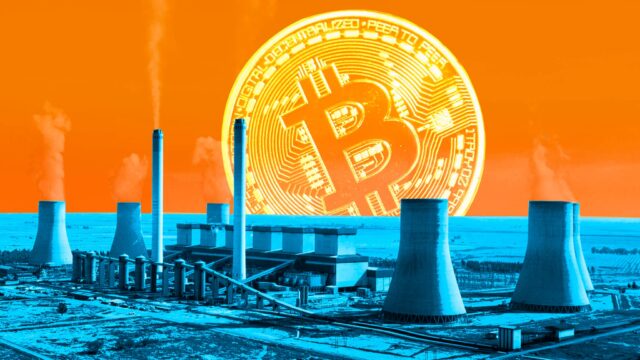
Bitcoin or other cryptocurrencies are generated by cryptographically verifying a transaction on a ledger. Thus, unlike traditional currency, where new notes are printed when all the existing bitcoins are over, new bitcoins need to be mined or generated using extremely powerful computers.
Cryptocurrency, or cryptos as they are popularly known, has been well adopted by many countries of the world. They offer a decentralized currency that is largely unregulated by government agencies, yet it is safe and secure since all the transactions on the ledger are verified. Whenever a commodity offers enormous advantages, its demand in the market increases; the same is the case with cryptos.
People have now realized the immense potential of these currencies and are now looking for new ways to make money by investing in them. Some people are stalking these currencies, while some others are holding on to them as long-term investments. If one is interested in investing in these currencies, then they can browse the internet and visit sites like www.juststartinvesting.com.
The Environmental Consequences Of Bitcoin Mining
Generating bitcoin has an enormous impact on the environment; however, it is not an easy correlation for people to see. People see cryptos as a financial entity and cannot see how they can affect nature or its natural resources.
Generating new bitcoins has to be done with large computers that have the capability to perform millions of mathematical operations at any given second. Since these computers are running multiple computations at any given time, they need energy or electricity to function. The simple correlation is the harder a machine works, the more energy it needs, be it in terms of fossil fuels or in terms of electricity.

Also, when a machine works very hard, it generates a lot of heat; its coils, its circuits, etc., all generate heat. The heat that is generated needs to be dissipated, or else the circuits that run the machine will start to melt, and that will cause permanent damage to the system. Thus, to cool the system, fans are required, which again requires energy to run.
This electricity is generated mainly from fossil fuels and partly from other sources of energy like hydroelectric power( generated from the flow of water) or solar power ( generated from sunlight) etc.
Also, this energy is also required for household consumption, running industries, etc. Thus, when electricity is used by giant crypto-generating computers, it directly competes with households and industries.
Reasons Why Generating A Bitcoin Consumes A Lot Of Energy
Verifying A Block Depends On Probabilities
Although multiple people try verifying a block at the same time, only one computer gets success. This is because the solution to the mathematical problem posed depends on probabilities. Thus, what a computer does is generates multiple, random answers till the correct match is obtained. As it is a game of possibilities, the more random numbers a particular machine generates, the more chances for that specific machine to get the correct answer.

Thus, these machines generate millions of answers per second to increase their probability of getting the correct answer.
The Complexity Of The Problems Increases With Time
There are two reasons why solving the mathematical operation becomes tougher with time. The first reason is that as more people become aware of the existence of bitcoins and the ways to mine them, they too join the league to mine cryptos, so the competition becomes higher. As the competition becomes higher, the mathematical operation becomes tougher.
Also, there is a fixed pace at which these blocks can be mined; that is, a block can be generated in ten minutes. Thus if the computers are getting smarter, they readjust to increase the level of difficulty for the computers so that the constant rate of one block per ten minutes remains fixed.
A Lot Of Potential For Wastage Of Energy
Generating new cryptos like bitcoins has a huge scope of energy wastage. The wastage of electricity could primarily happen in two of the following ways. Firstly, while thousands of computers compete against each other to crack the right answer, there is only one computer that succeeds in generating the correct answer.
Thus, only one system mines a block and gets a share of the bitcoins value for all the other systems that were in the fray to mine the mine and were unsuccessful; the amount of energy they used in the attempt to get the correct answer goes in waste.

Since generating a block is an expensive affair where the miner has to bear the high electricity costs, bear the price of buying a high-functioning computer and also take care of its maintenance. Miners often try to cut costs by purchasing a lower quality of hardware; however, this, in turn, wastes more energy and also requires replacements more often.
Also, since the problems become stricter with time, the computers require frequent upgrades, and more often than not, the electrical connections also need an upgrade, and the grid that supplies more energy is to be used.
Conclusion
The high energy demand for generating new bitcoins is one of the main reasons why crypto mining companies have to relocate to areas where there is an abundant supply of renewable forms of energy, and thus prices of electricity are lower. The bitcoin mining process requires almost 0.5% of the global electricity requirement; this is almost the same amount of energy that is required for entire countries like Argentina.
In fact, some estimates suggest that about 150 Terawatt-hour of power is consumed for crypto mining operations annually. A terawatt is a huge amount of power, where a terawatt is ten to the power of twelve watts. Governments across the world have taken note of the high energy demand for cryptocurrencies. Hence they have placed restrictions on areas where these currencies cannot be mined.

Thus, despite the growing popularity and economic value of these currencies, the high electricity demand for mining new bitcoins is a stumbling block for both governments and miners.












